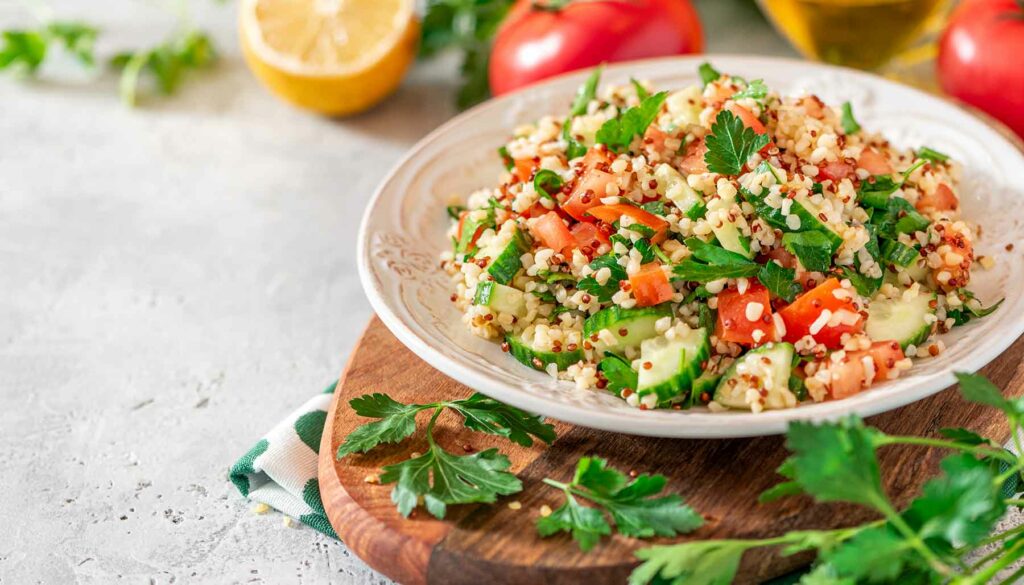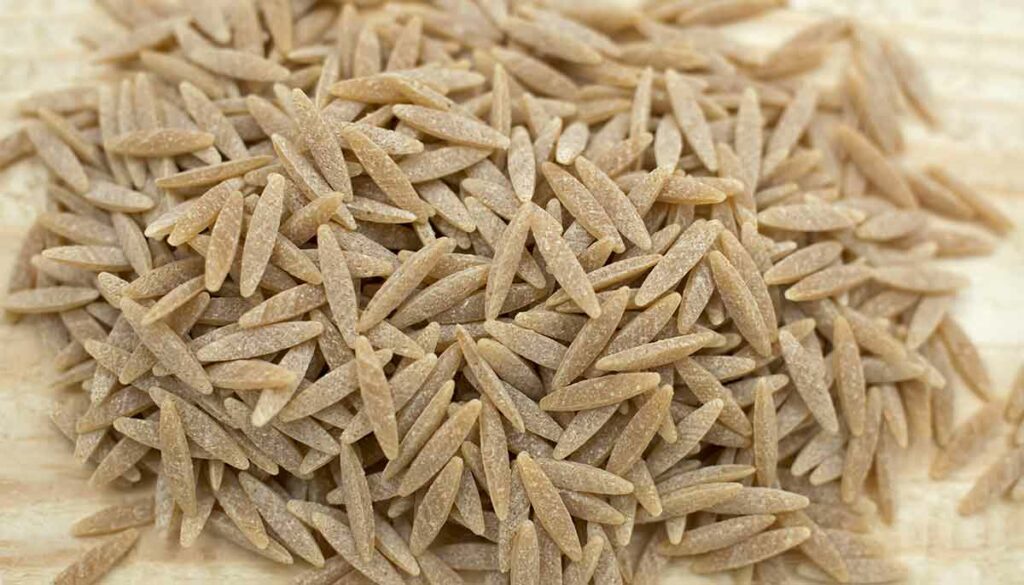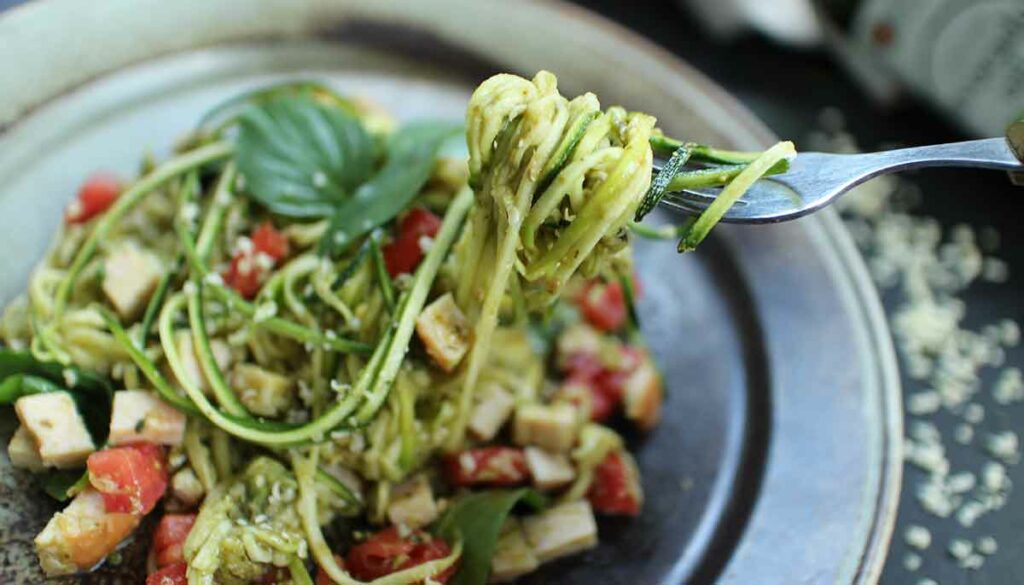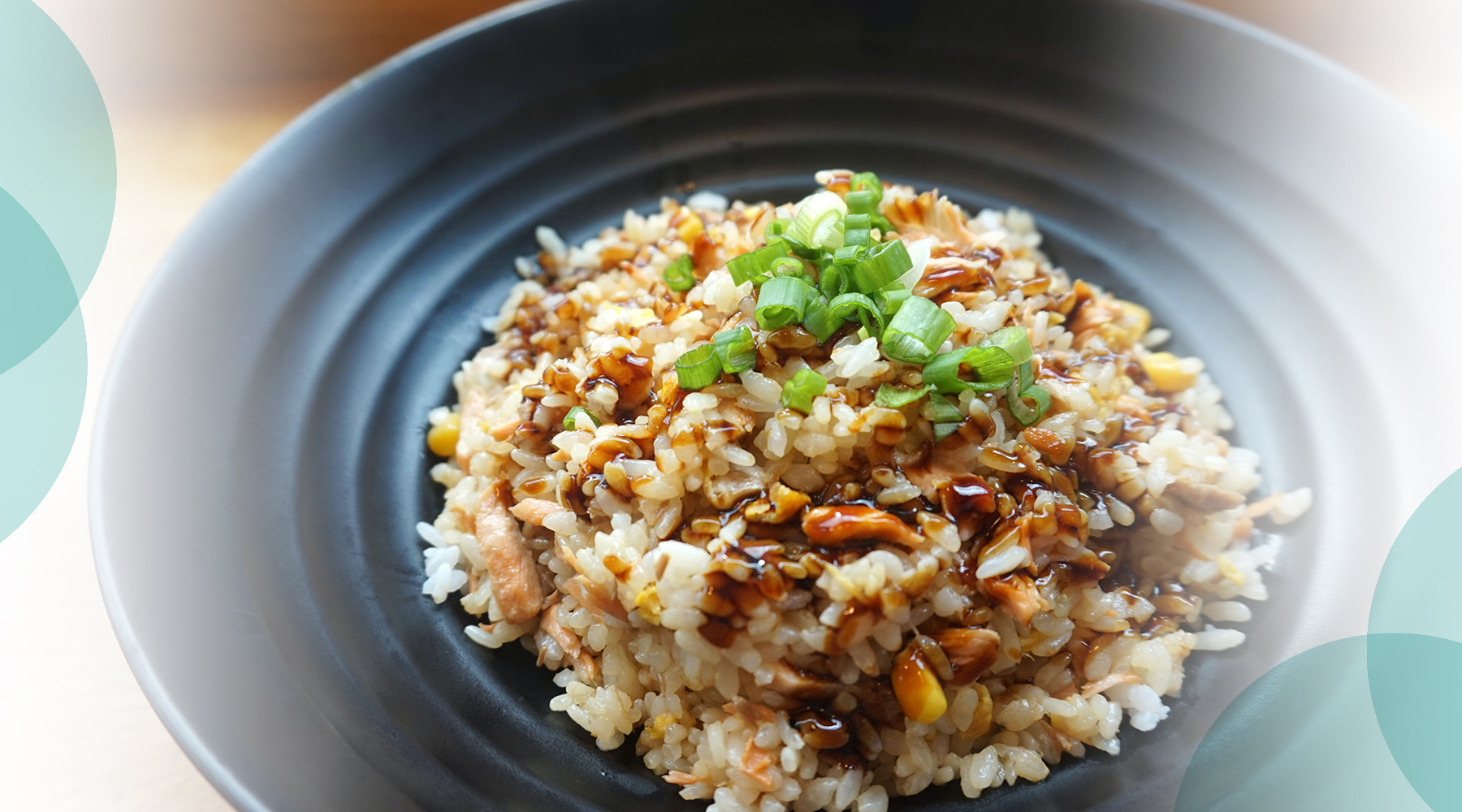In the past few years, I’ve seen a huge increase in people hoping to eat healthier. For many, that includes swapping out old standbys, like white rice and other refined grains. They are looking to replace them with less processed and healthier alternatives.
It’s a good idea. White rice is mostly empty carbs. In other words, you’re getting plenty of calories from carbohydrates with it, but it doesn’t come with much nutrition to go along with it. That’s because white rice is just brown rice that has been heavily processed, removing the grain’s protective coat and outer layer. During all that processing, it loses a lot of its nutrients.
Related: Realistic Ways To Cut Back on Processed Food
Luckily, there are plenty of healthier options out there. Besides, adding in some of these ingredients will bring plenty of variety to your diet!
Brown Rice

Rice consists mostly of carbs, so brown rice won’t be any better for a low-carb diet. However, it is a more nutritious rice option than simple white rice.
White rice is a refined grain that has had the husk, bran, and germ removed. While it makes the rice softer and quicker to cook, it also removes the most nutritious parts of the grain. Brown rice, however, is a whole grain that has not had anything removed. That means that brown rice contains more overall nutrition, including higher fiber and more vitamins and minerals. It can help with digestive health, and keep you feeling more full.
Quinoa
Why not swap that white rice for this gluten-free alternative? Quinoa very much acts like a grain in terms of texture and taste, but it’s actually a seed. Regardless, it makes a wonderful alternative in place of white or fried rice.
You’ll find that it has a low glycemic index, high fiber content, and is considered a good source of minerals. On top of that, quinoa is a complete protein. That means it contains all nine essential amino acids that your body needs, making it the plant-based protein source. High fiber and protein will also help you stay full for longer.
Wild Rice

We may call this rice, but it’s actually made of grains from four different species of grass. But hey, we use it like rice, it kind of looks like rice, and it’s definitely a more nutritious alternative to white rice.
This whole grain contains significantly more fiber and protein than white rice, making it a filling, satisfying choice. It is also a good source of vitamins, minerals, and antioxidants – much more than we find in white rice. This nutrient-dense food is also considered an excellent source of plant-based protein.
Riced Cauliflower
Cauliflower has become a jack of all trades these days. I’ve seen it riced, mashed, sliced into thick “steaks,” breaded… the list goes on. If you’re looking for an alternative to white rice, this chameleon is definitely up for the job. Riced cauliflower tends to have a similar texture and appearance to that of white rice. It also has a pretty mild flavor that tends to go with a variety of different dishes, making it an easy swap for rice.
Most importantly, cauliflower’s health benefits far outweigh white rice. It is very low in calories but very high in fiber, vitamins, and minerals, making it nutrient-dense and low-calorie friendly. And as a vegetable, it’s gluten-free, too.
Chopped Cabbage
Before riced cauliflower took over the low-carb game, chopped cabbage was at the top of the class. Well, at least in terms of stir-fry dishes, right? Chopped or cut into thin strips, cabbage makes a good alternative for rice in a variety of cuisines. You can probably even find riced cabbage these days.
Cabbage has a pretty mild flavor and kind of blends into any dish you introduce it to. It boasts lots of vitamin K and vitamin C, among plenty of other nutrients. And like cauliflower, it’s extremely low in calories and gluten-free, making it acceptable for a variety of different diets.
Bulgur Wheat

I am relatively new to cooking bulgur wheat at home, but it has been a welcome addition to meals in my house. It’s a staple in Middle Eastern and Mediterranean regions, and you may know it as a star of tabbouleh. But you can use bulgur in plenty of other dishes, too!
Bulgur is a whole grain, but it cooks much quicker than other varieties of whole wheat. These whole-grain kernels of wheat are cracked and parboiled before being dried and packaged, resulting in a shorter cook time. As with other whole grains, you’ll find it aids digestion, helps with weight management, and can increase gut health.
Freekeh
Freekeh is a similar alternative. It is also harvested from wheat, but freekeh is harvested from young, green wheat. It is roasted, giving it a slightly smoky flavor, versus bulgur’s nutty flavor. You’ll also find freekeh has a more chewy texture.
Nutrition-wise, freekeh is low on the glycemic index, making it diabetic-friendly. It’s a good source of nutrients, is rich in protein and fiber, and helps promote good gut health.
Barley
If you’re cooking a dish that would be complemented by a chewy side with an earthy taste, you can’t go wrong with barley. It’s closely related to wheat and is available in many different forms. All forms of barley utilize the whole grain, except for pearl barley.
In terms of calorie count, it’s about on par with white rice. However, it contains more protein and fiber than its pale rice counterpart. This can help reduce cholesterol, plus helps you feel full for longer. Barley also contains a variety of nutrients that you won’t find in rice, making it a healthier choice.
Whole Wheat Couscous
I have always loved couscous, but although it looks like a grain, it is technically a kind of pasta. It is made from semolina flour and water like pasta, although it has been around longer than pasta. Even still, couscous is lower in calories and has more protein.
Whole wheat couscous has even more health benefits than regular couscous, so it’s a pretty good alternative to white rice. The whole wheat variety is a good source of fiber, which can help regulate your blood sugar, lower cholesterol, and will keep you full for longer.
Whole Wheat Orzo

Orzo already has a leg-up as a rice replacement, considering its rice-like size and shape. This ingredient is actually a form of short-cut pasta. That means that, like couscous, orzo isn’t for the calorie counters. It still has a fairly high-calorie count.
At the same time, whole wheat options are healthier. Whole wheat orzo packs more fiber and protein than regular orzo or white rice. This can be beneficial to your gut health, and help you feel satisfied for longer.
Farro
Farro is a whole-grain wheat product. It doesn’t refer to one type of grain, but rather refers to one of the grains of three wheat species, which have been dried. In the U.S., emmer wheat is the one that’s most commonly found. You’ll find that this ancient grain has a nutty flavor and a chewy texture.
Farro is highly nutritious, containing protein, fiber, antioxidants, and important nutrients. And in fact, if you pair farro with black beans or other legumes, you’ll get all nine essential amino acids – making a plant-based complete protein source!
Related: Our Favorite Healthy Snack Ideas
Lentils
I really like how versatile little legumes can be. Lentils can be used as a rice substitute in hot and cold dishes, not to mention they make a lovely filling addition to soups. The taste and texture of lentils vary depending on their color or variation, so the lentils you choose might depend on what you’re cooking, although it’s worth noting that they tend to absorb a lot of the flavors they’re cooked with.
You’ll find a wide range of vitamins and minerals in lentils that you wouldn’t otherwise get with white rice. Lentils also have plenty of fiber and protein.
Buckwheat
Buckwheat is another ingredient that I have started cooking more recently, after discovering the Russian favorite. Despite the name, it isn’t wheat. It is a gluten-free seed from a flowering plant. It has a chewy texture, and a toasty, nutty flavor. If you’ve never used buckwheat before, look for kasha, the pre-toasted kind.
These little guys are carb-heavy, but they also contain protein, fiber, minerals, and antioxidants. Buckwheat could help improve blood sugar levels, promote heart health, and help you feel more full.
More Vegetables!

If you really want something healthier than white rice, you can’t ever go wrong with more vegetables. I know we already mentioned chopped cabbage and riced cauliflower, but vegetables, in general, deserve a spot on this list.
For something really nutritious, filling, and satisfying, zucchini is always a great choice. It’s packed full of important vitamins, minerals, and antioxidants, plus it boasts a low-calorie count. Zucchini is also known for its high fiber content, which plays an important role in digestion and can reduce the likelihood of some GI issues. Chop it up, or use a spiralizer to create “zoodles.”
Broccoli is another excellent vegetable to eat instead of white rice. Like zucchini, it has plenty of important nutrients, a low-calorie count, and a high amount of fiber. Broccoli can be riced just the same as cauliflower, too.













